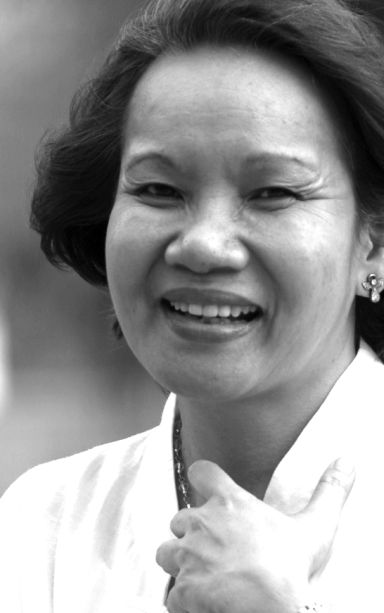World Day Against Trafficking in Persons —July 30

LOGARTA
In the Legal Alternatives for Women Center weekly TV program, “Sa Mata sa Kababayen-an” we encountered Atty. Archill Niña Capistrano of Children’s Legal Bureau, Nidelito Jorda and Hazel Bagunok, students of the University of San Carlos.
They enthusiastically shared the news that they were coming up with a new project. They were going to embark on an information, education campaign regarding trafficking in person via social media.
They were going to have an organization, Youth Against Trafficking in Persons (YATIPS) and they will be inviting other youth involvement.
Atty. Noemi Truya-Abarintos, Ms. Fe Cabatingan, and Atty. Virginia Palanca-Santiago welcomed this development because here were the young people engaged in a very meaningful and worthwhile activity using a medium suited to their fellow youth.
The theme of the celebration is “Act to Protect and Assist Trafficked Persons”. Our attention is called to the fact that: “Trafficking in persons is a serious crime and grave violation of human rights.” And the tragic situation is that: “most people never identified as trafficking victims therefore cannot access most of the assistance and protection provided.”
To clarify this important issue, let us start with the definition provided by the primer on anti-trafficking provided by the Commission on Filipinos Overseas. “
1. It involves the recruitment, transportation, transfer, harboring or receipt of a person or persons.
2. It is committed with or without the victim’s consent or knowledge.
3. It is done within or across national boundaries.
4. It is committed by means of threat or use of force or other forms of coercion, abduction, force, deception, abuse of power or position, giving or receiving of payments or benefits to achieve the consent of a person having actual control over another person, and
5. It is done for the purpose of exploitation such as sexual exploitation, forced labor or services, slavery. And other similar acts.”
To clarify further, there are three categories of Trafficking in Persons.
The first is Trafficking in Persons and an example of which is: “Introducing or matching for money or other consideration, any person or, as provided under R. A. No. 6955, any Filipina, to a foreigner, for marriage for the purpose of prostitution, pornography, sexual exploitation, forced labor, slavery, involuntary servitude or debt bondage.”
The second category is “Acts that Promote Trafficking in Persons.” Acts include: “Advertising, publishing, printing, broadcasting or distributing by any means, including the use of information technology and the internet of any propaganda material that promote trafficking in persons.” Another is: “confiscating, concealing or destroying the passport, travel documents or personal documents or belongings of the trafficked persons in furtherance of trafficking or to prevent them from leaving the country or seeking redress from the government or appropriate agencies.”
The third category is “Qualified Trafficking in Persons.” An example of this is “adoption for the purpose of prostitution, pornography, sexual exploitation, forced labor, slavery; involuntary servitude or debt bondage; and “the offender is an ascendant, parent, sibling, guardian or person who exercises authority over the trafficked person or when the offense is committed by a public officer or employee.”
Although the “Philippines is identified as a source, transit, and destination country for men, women and children trafficked for the purposes of sexual exploitation and forced labor,” it has been recognized as having the laws and organization to cope with this challenge.
The Cebu provincial government, through the Committee on Women and Family Affairs headed by Hon. Agnes Almendras-Magpale, exerted efforts to strongly require barangay captains to have a logbook for recruiters to be registered. It has also a special task force on this.
Non-government organizations responded to this issue. Sanlakas prepared a documentary which compared the phenomenon to the preparation and sale of lechong manok.
The Legal Alternatives for Women Center have cooperated with various groups to respond in actual cases of trafficking in persons.
Recognizing the importance of being well-informed on the issue, the Department of Education has included this in the curriculum as a major topic in Grade 10 Contemporary Issues in Araling Panlipunan.
In Our Lady of Joy Learning Center, Ms. Delia Aliño-Villacastin gave her Communication Arts Grade 10 students a special assignment.
They had to seek out slaves of ancient history as well as modern day slaves.
They dramatically portrayed an ancient slave as well as a modern slave in the school’s culminating activity at SM Consolacion. It turned out to be a very effective activity to make the young people sensitive to the condition of these oppressed human beings.
Disclaimer: The comments uploaded on this site do not necessarily represent or reflect the views of management and owner of Cebudailynews. We reserve the right to exclude comments that we deem to be inconsistent with our editorial standards.
